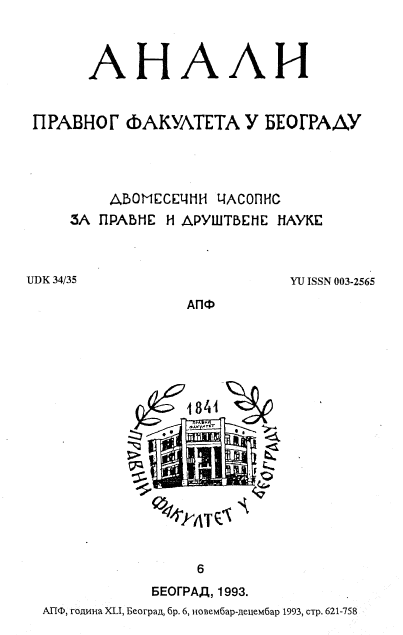ПРАВНИ ПРОПИС И ПРАВНА НОРМА
LEGAL PRECEPT AND LEGAL NORM
Author(s): Todor I. PodgoracSubject(s): Law, Constitution, Jurisprudence
Published by: Правни факултет Универзитета у Београду
Keywords: Legal precept; Legal norm; The sense of norm; Interpretation
Summary/Abstract: The relationship between a legal precept and legal norm should be set in a different way. According to corresponding analysis, legal precept is an elementary unit of a statute or some other legal text, which appears as a statement in a determined form (article of paragraph, and their lower-level parts, i.e.: subsection, item, or even sub-item, provided it makes a meaningful entirety), while legal norm is a statement which is derived, construed or reconstrued out of legal precepts and the one which, as such and in a continued process, could be reduced to the very sense of precepts. The sense of legal precepts may be determined (mainly by legal science) in an absolute, abstract manner, or entirely (in judicial practice) in relation to an actual situation which should be settled. In the first instance, legal norm derived out of legal precepts, namely the sense derived out of them, refers to all those actual situations characterized by identical basic features. There is no significant difference in this case, except in the degree of generality, between the legal precept or precepts, and the legal norm as relating to the actual situations encompassed by it (by them). However, the legal norm obtains its full capacity - namely, sense - only after resolving specific actual situations, exactly due to nuances distinguishing them. The emphasis is placed at this second instance - determining the sense of legal precepts (deriving a legal norm out of them) in relation to a given situation, since the interpretation depends, as far as meaning is concerned, on the texts itself, but also on the person making it and his cultural environment, the system of values, as well as the very actual situation which is the subject of judicial decision. Similarly to a ball, the truth may be seen in a given moment only from one side, while trying to look at the other, the first one is lost out of sight. Are the issues elaborated as well as analyzed in the present article in a somewhat peculiar way (namely, looked "from the other side") only of a terminological nature? Do they reveal, at least partly, the truth of the discussed matter (i.e. legal norm, interpretation of law, and the law itself)? Indeed, finally, the law includes not only the positive law (which has long been the habit in understanding it), but also the objective law.
Journal: Анали Правног факултета у Београду
- Issue Year: 41/1993
- Issue No: 6
- Page Range: 660-673
- Page Count: 14
- Language: Serbian

